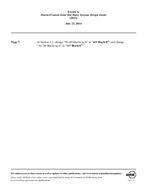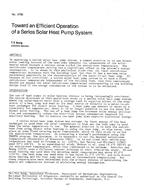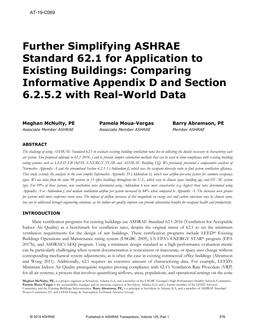Poor conditions leading to substandard indoor air quality (IAQ) in classrooms have been frequently cited in the literature,but there is limited data linking poor IAQ to student performance. This study includes a new robust set of data focusingon the association between students’ academic achievement and classroom ventilation rates. Data on classroom conditionsand carbon dioxide concentrations were recorded (over a 4 to 5 day span of school days) in 140 fifth grade classrooms in 70schools (K-8) within a Southwestern school district in the USA. Carbon dioxide concentrations were used to approximateventilation being provided to the classrooms during the occupied hours. In addition, standardized test scores andbackground data related to students in the classrooms were obtained from the district. Of the 140 classrooms measured,135 (96%) had ventilation rates below 7.1 l/s per student and 114 (81%) classrooms had ventilation rates below 5 l/s perperson. Therefore, the study reveals significant deficiencies in provision of adequate ventilation in the studied schools. Theresults of this study also support the earlier studies by the authors, suggesting that increasing the ventilation rates towardrecommended guidelines in classrooms should translate into improved academic achievement of students. With theincreased focus on energy consumption and energy management systems, the results may help in optimizing systemoperation to ensure both sustainable and productive school environments for students and personnel.
Citation: IAQ Conference: IAQ 2013: Environmental Health in Low Energy Buildings
Product Details
- Published:
- 2013
- Number of Pages:
- 7
- File Size:
- 1 file , 1.7 MB
- Product Code(s):
- D-2013IAQConf-17


